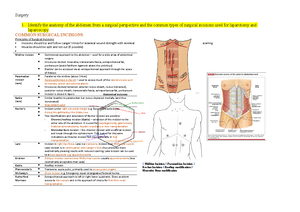- Information
- AI Chat
Was this document helpful?
Homeostasis Essay
Module: Medicine (A100)
410 Documents
Students shared 410 documents in this course
University: Keele University
Was this document helpful?

Homeostasis describes how the Human Body keeps conditions within constant. It is the maintenance of
the same internal environment and also allows the body to work at its optimum. Homeostasis is able to
maintain water balance, blood sugar levels, ions and pH. All the factors mentioned are to remained
constant. It also has the external factors for exercising as the Heart rate increases as well as Carbon
Dioxide. This is because breathing in gets rid of the CO2 and acquires Oxygen. Lastly, eating is also an
external factor due to the glucose levels as when there is too much glucose, it is stored in the body. The
major Organs involved in Homeostasis is the Brain, Muscles, Skin, Lungs, Pancreas as well as the
Kidneys. An example as to how all the organs are maintained is that firstly the Kidneys remove the waste
products by the process of metabolism by producing as well as secreting in Urine. They overall regulate
the concentration and the volume of body fluids. The organ of the Liver control glucose regulation by
storing in Glycogen and preventing low blood sugar levels. Also, the skin maintains Homeostasis by
protecting and regulating body temperature, absorption of materials and water balance. It is the barrier for
protecting inside the body. The Lungs however maintains gas exchange by eliminating Carbon Dioxide.
The Pancreas regulates glucose in the body leaving with the Hypothalamus which forms the release and
inhibition of hormones that prevents and begins the production of many other hormones throughout the
Human Body. This has a Physiological effect.
The two systems which provide a major role within the process of Homeostasis is the Endocrine System
and the Nervous System. The Nervous System is able to regulate and maintain Homeostasis by sending
electrochemical signals throughout the Human Body. This coordinates and executes the voluntary and the
involuntary processes which maintains Homeostasis. The Nervous System is comprised with fibrous
axons which can stretch through the body and interconnect to coordinate activity. The Endocrine System
however maintains Homeostasis to by producing hormones and maintain it by controlling the balance of
water content, body temperature as well as blood glucose levels. If the blood sugar levels increase, the
pancreas is able to detect it indicating that Insulin is released to act on the liver to allow excess glucose to
convert into Glycogen. But once the blood sugar levels decrease, glucagon is released and acts on the
liver, allowing the Glycogen to convert back into Glucose. Overall once the Endocrine System refuses to
function, the Brain would not receive enough glucose and shuts down due to the fact that the blood needs
a constant supply of it. The nervous system in homeostasis controls and maintains other parts of the
human body as a deviation from the normal set point is able to act out as a stimulus and to a receptor.
This is able to send in a nerve impulse to a regulating center in the brain. Finally, the endocrine system
regulates the activity of the cells in the body. The release of the hormones in the blood can be controlled
by the stimulus. The stimulus itself causes the increase or a decrease in the number of hormones that are
secreted.
Mechanism of Homeostasis Control
To be able to sustain Homeostasis, the process of communication within the body is essential. To
summarize as to how the Homeostatic Control system functions:
Stimulus: is able to produce a change to a variable which is the factor that is regulated.
↓
Receptor: then is able to detect the change as this monitors the environment as well as how it responds
to change involving the Stimuli.







